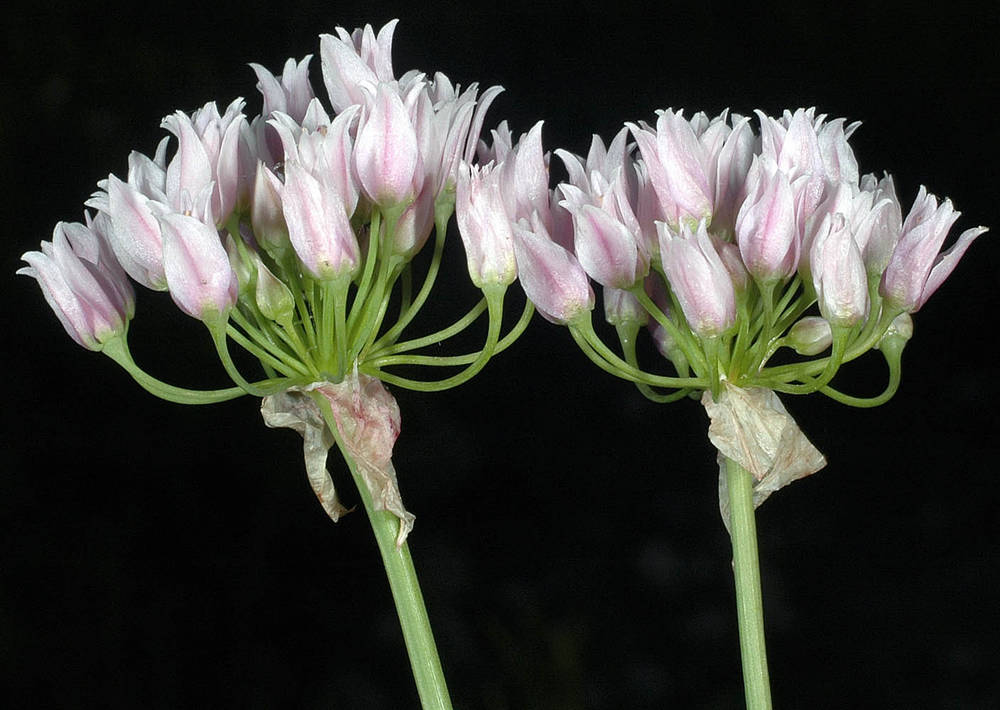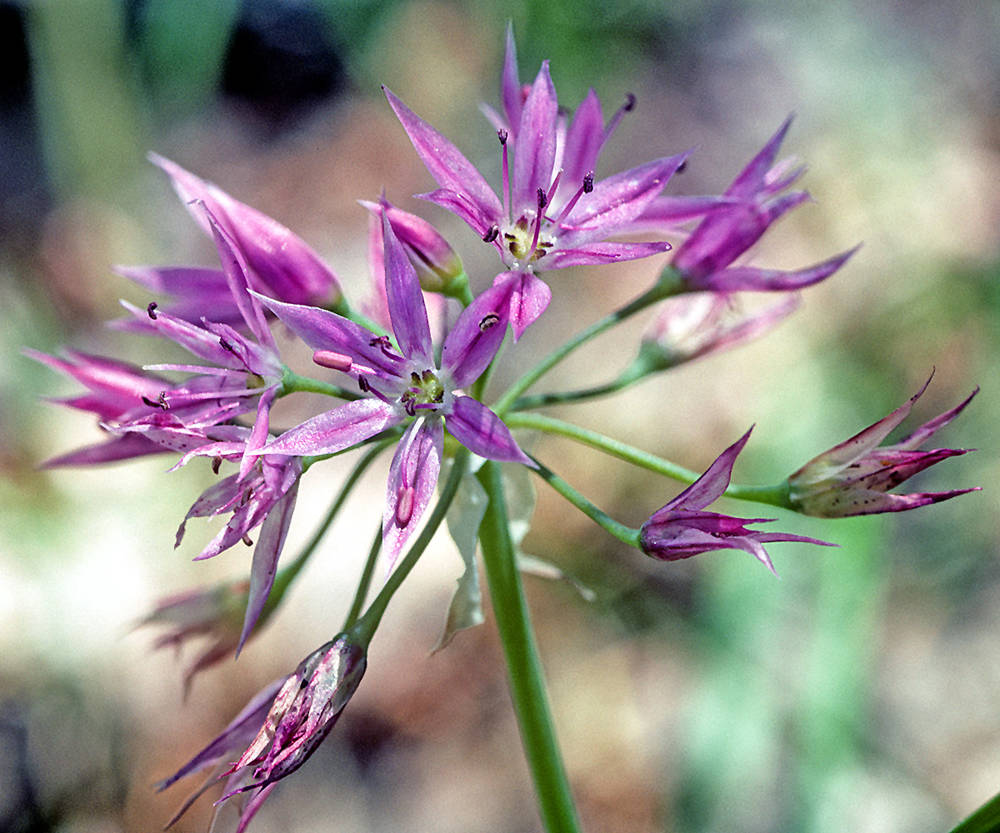Allium geyeri
Allium bisceptrum
Geyer's onion
twincrest onion
2–10+; ovoid or slightly elongate;
outer coats enclosing 1 or more bulbs, reticulate;
cells rather coarse-meshed; open, fibrous.
1–7+, commonly producing either a cluster of stalked;
basal bulbils or filiform rhizomes to 10 cm, terminated by bulbils;
rhizomes usually lost when specimens are collected; ovoid;
outer coats enclosing 1 or more bulbs, membranous, obscurely cellular-reticulate;
cells rectangular;
walls minutely sinuous; vertical, varying to irregular; all sinuous; without fibers.
persistent, usually green at anthesis, usually 3–5;
blades solid; more or less straight; flat, channeled; (6)12– 30 cm × 1–3(5) mm.
persistent, green at anthesis, 2–5;
blades solid; flat, broadly channeled, 8–30 cm × 1–13 mm.
persistent; solitary; erect; terete or somewhat 2-angled, 10–50 cm × 1–3 mm.
persistent; solitary or clustered, 1–3; erect; solid; terete, 10–30(40) cm × 1–5 mm.
persistent; erect; compact, 10–25-flowered, hemispheric to globose, not producing bulbils, or 0–5-flowered, largely replaced by ovoid, acuminate bulbils;
pedicels becoming rigid and stiffly spreading in fruit, 8–13 mm;
spathe bracts 2–3.
persistent; erect; loose, 15–40-flowered, globose;
pedicels 10–20 mm, often becoming flexuous and deflexed in fruit;
spathe bracts 2.
(4)6–8(10) mm;
tepals erect or spreading; ovate to lanceolate; more or less equal, pink to white;
margins often obscurely toothed;
apex obtuse to acuminate;
stamens included;
ovary when present, inconspicuously crested with 3–6 low processes;
stigma unlobed or obscurely lobed.
7–10 mm;
tepals spreading, lanceolate; more or less equal; lilac to white, becoming papery in fruit, not keeled;
margins entire;
apex acuminate, not involute;
stamens included;
ovary conspicuously crested with 6 triangular processes;
stigma unlobed.
=14, 28.
Allium geyeri
Allium bisceptrum
2 varieties.
Meadows and aspen groves, less commonly on open slopes in mountains, grasslands with juniper, pumice barrens. Flowering Jun–Jul. 1400–2000 m. BW, ECas, Owy. CA, ID, NV; southeast to NM. Native.
Nick Otting, Richard Brainerd, Barbara Wilson
Nick Otting, Richard Brainerd, Barbara Wilson
- Local floras:
BC,
OR,
WA
- Local Web sites:
Flora NW,
PNW Herbaria
WildflowerSearch
iNaturalist (observations)
USDA Plants Database
- LBJ Wildflower Center
- SEINet
- Plants of the World Online
- Encyclopedia of Life
- Wikipedia
- Google Image Search





